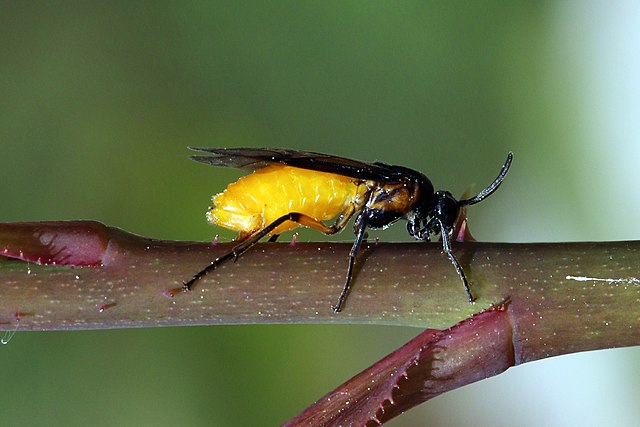Horntail or wood wasp are any of the 150 non-social species of the hymenopteran family Siricidae, a type of wood-eating sawfly. The common name "horntail" derives from the stout, spine-like structure at the end of the adult's abdomen, which is used to pierce the host's bark to allow the eggs to be inserted into the wood. A typical adult horntail is brown, blue, or black with yellow or red parts, and may often reach up to 4 cm (1.6 in) long. The pigeon horntail can grow up to 5 cm (2.0 in) long, among the longest of all Hymenoptera.
Horntail
Sirex noctilio ("Sirex woodwasp") from New Zealand, on Pinus radiata. The spiral groove on the ovipositor is visible.
Giant horntail (Urocerus gigas)
Eourocerus anguliterreus holotype fore-wing (counterpart). Ypresian Klondike Mountain Formation
Hymenoptera is a large order of insects, comprising the sawflies, wasps, bees, and ants. Over 150,000 living species of Hymenoptera have been described, in addition to over 2,000 extinct ones. Many of the species are parasitic.
Females typically have a special ovipositor for inserting eggs into hosts or places that are otherwise inaccessible. This ovipositor is often modified into a stinger. The young develop through holometabolism — that is, they have a wormlike larval stage and an inactive pupal stage before they reach adulthood.
Hymenoptera
Bombus muscorum drinking nectar with its long proboscis
Symphyta, without a waist: the sawfly Arge pagana
Apocrita, with narrow waist: the wasp Vespula germanica








